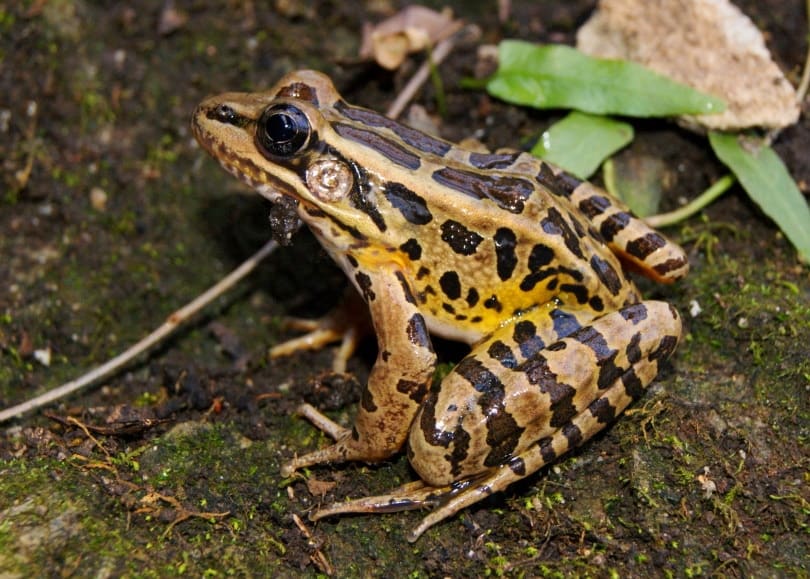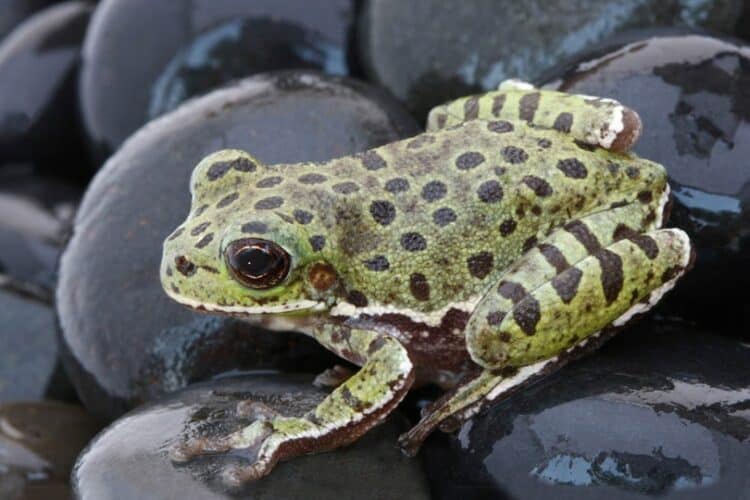In the spring and summer, suddenly frogs suddenly seem to show up everywhere. They are often near bodies of water, but some types of frogs, like tree frogs, will also show up on trees and houses. It can be nearly irresistible for your dog to leave a frog alone once they’ve spotted it. After all, frogs have unusual and erratic movements in the eyes of your dog. This can make them look like a prey animal or simply like something that might be fun to play with.
Should you be concerned if your dog chews on or eats a frog? Here’s what you need to know.
Are Frogs Poisonous to Dogs?
The good news is that the vast majority of most frogs aren’t poisonous if consumed. Many frogs with poisonous properties often obtain this via their diet, so even poisonous frogs often lose their poisonous threat when kept in captivity. They may irritate your dog’s mouth, though, so it’s possible that you’ll see your dog spit the frog out instead of eating it. They may drool excessively after spitting it out, which should clear up after a little while.
Whether you should be concerned about poisonous frogs depends largely on where you live. Your dog is unlikely to come into contact with a poisonous frog in the United States, but they might if you live in South America.
Special Considerations
If you see your dog chasing after a frog, the biggest thing you should consider is whether your dog is going after a frog or a toad. Many toad species are toxic to dogs to some degree. Generally, toads have rough, bumpy skin, while frogs tend to be smooth. Frogs also typically stay close to water throughout their life, while toads usually breed in or near water but don’t live permanently in the same area. However, there are frogs and toads that go against the norm.
The best thing you can do is to become familiar with the appearance and the calls of the frogs and toads that live in your area. This will help you better identify what your dog may be chasing after. You should also discourage your dog from chasing after frogs and toads in general. They are an essential part of the ecosystem and should not be threatened by your dog.

What Should I Do If My Dog Eats a Frog?
If you see your dog bite or eat a frog, you should contact your veterinarian. If you are able, take the frog to the vet so they can see and identify what your dog had in their mouth. This will help them determine a course of treatment — if treatment is necessary at all. Most dogs will spit out frogs and toads once they get them in their mouth because of their unpleasant taste, but some dogs may panic and swallow the creature.
If you live in an area where frogs are regularly hanging around your home, you may need to keep your dog on a leash when outdoors or only allow them to go outside with supervision. Your dog is at the greatest risk of encountering frogs and toads in the spring and summer. For your dog’s safety and the safety of your local wildlife, it’s best for you to keep your dog away from frogs, toads, and other wildlife.
In Conclusion
Your dog is unlikely to suffer any type of toxicity from eating or biting a frog, but this is largely dependent on your local environment. There are multiple species of toads that can be toxic to dogs, though, so it’s best for you to become familiar with the amphibians that live near you. This will help you better identify species and keep your dog safe. If your dog does consume a frog, a vet visit is likely in order to ensure your dog is safe and isn’t going to experience any form of toxicity.
Featured Image Credit: Steve Bower, Shutterstock














